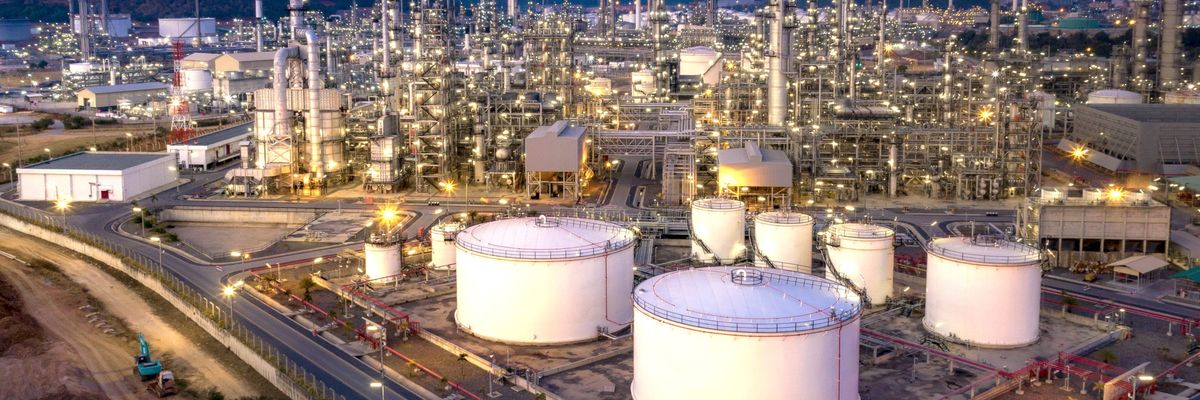The dramatic fall in oil prices triggered in part by the price war between Saudi Arabia and Russia has generally been seen as signaling economic disaster not only for the oil producers but also for countries, especially in the Middle East, which depend on remittances from their nationals working in major oil exporting states such Saudi Arabia and the UAE.
The situation is made more serious by the fact that a quick recovery in oil prices is unlikely, especially in light of the overall slowdown of the global economy as a result of COVID-19. Yet, if properly understood and used, the lower oil prices and the drop in the income of major oil producers could prove to be a blessing in disguise by prompting more rational and less unrealistic economic and political objectives, plus a renegotiation of the social and political bargain between governments and peoples in the Middle East.
Misuse of oil wealth
After the sharp increase in the oil producers’ incomes in the 1970s, there were great hopes for the development of not only the Middle East, but also other developing countries, including in Africa. There were many schemes for intra-Arab economic cooperation as well as so-called Afro-Arab cooperation. Asian countries were not excluded from such schemes. It was hoped at the time that the capital of oil exporters, the technology of the Western states, and the resources of other states could be harnessed for global development within the framework of what was then referred to as Trilateral Cooperation.
By the 1980s, nothing much was left of these lofty objectives. With the arrival of the Reagan administration in 1981, the United States lost interest in the Third World except as an arena of competition with the USSR as in Afghanistan. The oil exporters used their money to buy arms and build huge white elephants, including in desert areas, or to buy hotels, palaces, and other luxuries in Western countries. Although relatively large amounts of aid were dispensed to poor countries, they were not used to make wise investments in agriculture and industry which could have helped in the development of self-sustaining economies.
Some of the misuse of funds was the consequence of the strategies for what was then called the recycling of petrodollars and was aimed at providing recompense to industrial states for the higher prices of imported energy. Buying large amounts of weapons, investing in large economies, and even buying real state and luxury items were part of the deal.
Financing wars and terror
The increase in oil exporters’ wealth also contributed to regional wars. For instance, Iraq could not have initiated and conducted an eight-year war against Iran without the financial and material support of oil rich countries. Iran itself, although much less well endowed in petrodollars, would have been forced to end the war sooner without oil income.
In more recent times, Saudi Arabia’s decision to invade Yemen, followed by the UAE’s engagement in the conflict, plus Abu Dhabi’s interventions in Libya and elsewhere, were all made possible by their oil wealth. Moreover, nearly all oil exporters have at one time or another supported paramilitary and even terrorist groups, from the Taliban to Hezbollah to ISIS and many others. The rise of Islamic extremism was also accelerated as a result of the misuse of oil money, plus the instrumentalization of religion as a tool of foreign policy.
Equally negative was the emergence of a destructive nexus between oil money and the defense industries of the advanced countries. This connection bound major Western economies to a few key oil producers and made them overlook the latter’s transgressions in various areas. These defense industries have also contributed to the perpetuation of regional conflicts or at least have exacerbated them.
For example, the Iran-Iraq war was a boon to many arms producers — notably France, which sold Baghdad the “Etendard” fighter jet. Regional conflicts in the Middle East and the Persian Gulf have also become fertile ground for testing new weaponry, from drones, to patriot missiles, to the Russian S300 and S400 missile systems, as the Spanish civil war and other conflicts were in the past.
Preventing political and institutional maturation of states
Perhaps the worst outcome of oil wealth has been the ability of often-repressive regimes to stay in power using oil rents. Oil wealth has enabled states to strike a bargain in which the government provides an acceptable living to the population and collects no taxes in exchange for the people forfeiting their political rights. In fact, in oil producing states, the dictum of “no taxation without representation” has been inverted to “no representation without taxation”.
Over the years, oil rents have trickled into other countries, through either direct aid or the migration of workers into oil producing states, again helping repressive governments stay in power.
Future outlook
There is no guarantee that lower prices would lead oil producers to reassess their past behavior, to abandon some of their most extravagant and unrealistic projects, and to instead focus on the development of more modest and sustainable economies that are less vulnerable to the vagaries of fluctuating oil markets.
Nor is there any certainty that lower oil incomes would check the most interventionist and destabilizing impulses of oil producers and push them towards compromise and resolving outstanding disputes.
Even less likely is the willingness of authoritarian governments to relax political and other restrictions on their people. But if they don’t, and their oil incomes do not recover soon, the bargain that they have made with their peoples could start crumbling and potentially cause social and political unrest.
If these states see the present low prices as an opportunity for reform toward more realistic economies and more limited political ambitions, however, both they and the rest of the Middle East could vastly benefit in the long run. In this context, the United States, instead of pushing for higher prices, should encourage realistic reforms which could help increase the long-term stability of its regional allies.
















